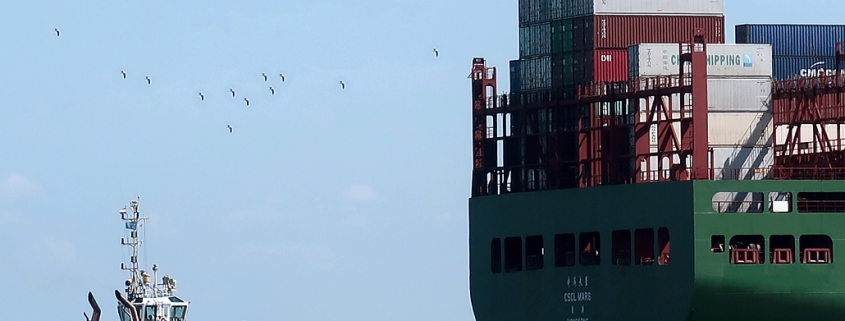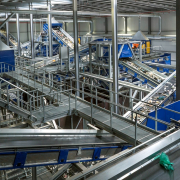Cambodia Refuses to Be a “Waste Bin”
In July this year, Asian channel CNA reported that the Kingdom of Cambodia would send back 1,600 tons of plastic waste found in shipping containers to the USA and Canada.
The Southeast Asian country does not consider itself as a bin for “out-of-date technology to be dumped in”, a spokesman of the Cambodian environment ministry told the news agency AFP. According to the Canadian Global Television Network, Cambodia does not allow imports of any kind of waste, including plastics for recycling. “83 shipping containers of plastic garbage were discovered in the main Cambodian port of Sihanoukville, with what Cambodian media reports say were fake import documents labeling the containers as recyclables,” the information said. The containers, which had arrived in different shipments since October 2018, were uncovered during a Cambodian campaign to crackdown on illegal imports. “The country says 11 of the containers originated in Canada, and the rest came from the United States.” As reported, the Canadian government has asked officials in Cambodia for more information about the containers of Canadian waste which – as the Southeast Asian country’s environment ministry says – ended up there illegally.
Waste is piling up
The Kingdom’s waste production has grown by about ten percent annually, the newspaper Khmer Times stated in October last year. In 2017, the amount of garbage and solid waste in the country was estimated at 3.65 million tons, which means more than 10,000 tons per day. According to the provided information, the country’s capital Phnom Penh produced the most proportion of waste with about 3,000 tons per day, followed by Sihanoukville with about 600 to 650 tons/day and by Siem Reap city with about 350 to 400 tons per day. Roughly 1.5 million tons of waste – or 41 percent of the total amount collected annually – was sent to dumpsites, while about 400,000 tons (which corresponded to about 11 percent) was recycled. “The remaining 48 percent was burned or thrown away into water bodies,” the publication pointed out. The ministries of environment and tourism had repeatedly underlined that factories, restaurants and markets should properly dispose of their waste as the amount produced in the Kingdom continues to grow.
As described in the “Phnom Penh Waste Management Strategy and Action Plan 2018 – 2035”, it is estimated that the capital city and its future new areas alone will have a population of nearly three million by 2035. Concerning the annual amount of municipal solid waste (MSW) in Phnom Penh, the volume cannot be precisely estimated, due to variations in the city’s population. The Institute of Technology of Cambodia assumed that the waste generation will grow until 2030. “MSW collected for landfill has increased exponentially over the past two decades due to an increase in population in Phnom Penh as well as an increase in waste generation by source,” the authors wrote in 2018. Thanks to the efforts of the Phnom Penh Capital Administration, the collection service provider and residents, “a rising trend in collection amount has been seen over the years.” In 2017, the average daily volume of MSW taken to the Dangkor final landfill was 2,215 tons/day; in the same year, the total amount of MSW disposal at the landfill was 808,530 tons.
The composition of MSW sampled at generation points in Phnom Penh is typical for the average Cambodian city: More than 50 percent is organic waste, followed by plastics (20.9 percent, including plastic bags, other plastics and PET bottles), papers (9.9 percent) as well as grass and wood (2.3 percent). “It is generally considered that the percentage of organic waste tends to be higher and recyclable waste lower at the final disposal site compared to at the generation stage as some recyclable wastes such as hard plastics, PET bottles, cans and metals are extracted at source by waste producers, removed by street scavengers before collection, or removed during collection by collection crews,” the authors of the strategy and action plan stated.
While there is a general lack of data on the actual amount of recycled waste in Cambodia, recycling activities of limited scale are observed in Phnom Penh. Several private companies are exploring the business potential targeting both organic and inorganic wastes. In response to the increasing stream of incoming waste to the final disposal site, the capital administration is also exploring potential measures for engaging recycling companies.
“Limits to recycling capacity are posing a major challenge to both Phnom Penh and Cambodia in the transition from a society based on linear approach to waste/resource management (in which resources are extracted, processed, consumed and disposed of) to the one based on circular approach, resulting in wastage of economic assets and environmental degradation,” the analysis stated. “Whilst a certain amount of recyclable waste is generated and collected nationwide, domestic recycling activities within Cambodia are limited due to the lack of recycling industry, recycling infrastructures and a market for recyclable materials and recycled products. Therefore, some of the recyclable wastes and materials are exported to neighboring countries for recycling purpose.”
Cambodia’s Road Map for Sustainable Development
The country’s “National Environment Strategy and Action Plan, 2016–2023 (NESAP)” aims to ensure that environmental protection and sustainable natural resource management are pillars of Cambodia’s socio-economic development. It intends to provide the country with a road map for achieving many of its Sustainable Development Goals as well as a detailed analysis of the state of the environment in Cambodia. The NESAP would outline priority policy and governance improvements and financing mechanisms that can help the country achieve environmentally sustainable economic development, the information said.
The NESAP also provides a detailed analysis of available funding streams and highlights the financing gaps – and opportunities – for implementing the action plan. 263 million US-Dollar of current and pipeline projects have been identified that will contribute to the plan’s implementation. “Details about these projects, including which objectives and Sustainable Development Goals they contribute to, are listed in an appendix to the NESAP document.”
According to the information, the funding gaps are also described. “These include gaps in funding for achieving objectives relating to technology and science transfer, public-private partnerships in green and sustainable development, and chemical and hazard waste management,” the information says. “The NESAP indicates that financing requirements will be met by co-financing from the government, development partners, investment funds, and private sources.”
www.adb.org/publications/cambodia-national-environment-strategy-action-plan
_______________________
A Favorable Business Climate
Cambodia is an attractive investment destination for enterprises looking to expand in ASEAN (Association of Southeast Asian Nations). “With a steady economic growth of around seven percent in recent years, which is forecasted to continue in 2019, Cambodia is on a steady path of economic improvement,” ASEAN Business News informed in March this year. “The growth rate is the highest amongst the fast-growing ASEAN nations. However, large-scale reforms are needed to support this growth and to make the country competitive on a global level.” According to the World Bank, the country’s economy performed better than expected, “driven primarily by a rapid expansion of exports and robust internal demand, as well as a surge in Foreign Direct Investment”.
The country’s investment laws are classified as “very open”. In combination with its proximity to production facilities in Thailand and Vietnam as well as the Chinese market, “the country represents a perfect investment opportunity,” ASEAN Business News wrote. As reported, 100 percent foreign ownership of companies is allowed in most sectors. The country’s investment law also provides regulations governing the protection of investments from regulated prices and nationalization. “Yet the lack of Rule of Law and the high endemic corruption may partially weaken those provisions.”
According to the Cambodia Investment Agency’s (CIA) own information, it serves as gateway to applying for all kinds of business and investment licenses. Services include:
■ Point out an accurate investment gateway, not the fake one.
■ Prepare all requirements investment and business documents as needed.
■ Register a new set up company/corporation, trademark and sign.
■ Consult legal affairs, business and investment matters.
■ Consult Environmental Impact Assessment.
■ Consult Khmer nationality request.
Tenders regarding Cambodia can be found at www.tendersinfo.com/global-cambodia-tenders.php and www.dgmarket.com/tenders/list.do?sub=tenders-in-Cambodia&locationISO=kh.
_______________________
(GR 32019, Page 19, Photo: Ellen26 / Pixabay)









